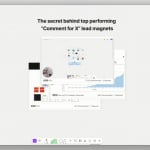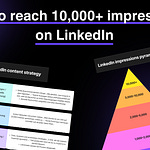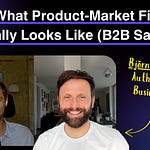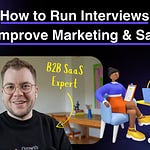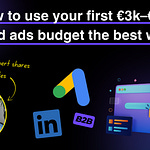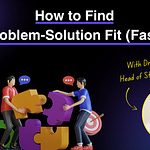Many early-stage founders want to “go product-led” - but don’t fully understand what that means.
They add a freemium plan or trial, set up some tool tips, and assume that’s enough to drive scalable growth.
It’s not.
In this episode of b2b_grwoth.exe I am interviewing Roelof Otten. He helps B2B SaaS startups to make PLG work, making their product sell itself 24/7.
We unpacked 7 common mistakes B2B SaaS companies make when adopting a product-led motion, and how to actually build a system that works.
New here? Each week, I share practical marketing strategies, tactics and learnings designed to help you scale your B2B business to €1 million ARR and beyond 🚀
Make sure to subscribe to not miss out on any episode!
Mistake 1: Thinking PLG = Free Trial + Onboarding
Roelof’s biggest observation: many teams treat PLG like a checklist.
Add free trial or freemium? ✅
Implement tool tips? ✅
Offer self-serve onboarding? ✅
Done? Not even close.
Why it’s a mistake:
PLG isn’t just a feature, it’s a growth engine. The product becomes the sales motion. That only works if the product is built to drive adoption, engagement, and expansion on its own.
“You can’t just slap on a free trial and expect the product to sell itself. It has to be part of the whole system.”
Mistake 2: Giving Too Much Away in Freemium
Many founders launch freemium to “let users experience the value.” But often, they end up giving away so much that users never upgrade.
What to do instead:
Be strategic: your free plan should drive toward upgrade triggers, not replace the need for them.
Consider a time-boxed free trial if you want to offer access without losing control over monetization.
“Freemium should serve your business. If the free version is too good, users won’t pay.”
Mistake 3: Treating PLG and SLG as Either/Or
Early-stage founders often ask: Should we go product-led or sales-led?
Roelof’s advice: Don’t make it binary.
Use hybrid models — sales-assisted PLG works especially well for complex or high-ticket products.
Segment by deal size: C- and B-tier customers can go through self-serve, while A-tier gets sales support.
“The higher the ticket, the more likely they’ll want to talk to sales. But that doesn’t mean the product can’t support parts of the journey.”
Mistake 4: Building Onboarding Without a Clear Goal
Most onboarding flows show features. But they don’t drive users toward outcomes.
Roelof’s rule: Start with the Ultimate Win - the key value or result your user is trying to achieve.
Then reverse-engineer:
What’s the smallest possible “aha” moment that proves value?
What steps are needed to get there?
How can we personalize that journey?
“Great onboarding starts with a goal. Without that, it’s just a tour of features.”
Mistake 5: Ignoring Onboarding Outside the Product
Many SaaS teams focus all their onboarding effort inside the app and forget everything outside it.
That’s a big miss.
Email sequences, WhatsApp nudges, and re-engagement flows are part of onboarding.
They help form habits and bring users back into the product.
“User onboarding is habit-building. That doesn’t stop when the user closes the tab.”
Mistake 6: Focusing Only on Churn Instead of Inactivity
Churn is obvious. It shows up on your revenue dashboard.
But inactivity is the real leak.
What to track instead:
Inactive users during trials or freemium plans
Drop-offs before value milestones
Segments that never convert to paid or engaged usage
“In almost every SaaS product I audit, 40–50% of users are inactive. That’s wasted CAC and effort.”
Mistake 7: Messaging and Pricing Not Ready for Self-Serve
Roelof learned this the hard way: if your pricing and messaging aren’t clear, PLG won’t work.
In his own startup, he skipped the free trial, had no onboarding, and only had a vague welcome screen. Support demand exploded. Sales slowed. And the business couldn’t scale.
“You need to explain your product clearly. If you can’t do that on your homepage, self-serve won’t work.”
When to Bring in a PLG Expert
According to Roelof, the ideal time is when:
You have early signs of product-market fit
You’re around €500k ARR
You’ve validated the core product and need to systematize growth
Final Takeaway
Product-led growth isn’t a checklist. It’s a strategy and shift in how you drive adoption, revenue, and scale.
To do it well:
Be strategic with freemium and trials
Build onboarding around outcomes, not features
Support the journey inside and outside the product
Treat PLG and SLG as levers, not labels
Track the quiet churn (inactivity), not just cancellations
And most importantly:
Don’t launch PLG until your messaging, pricing, and product are ready to convert.
Big thanks to Roelof for sharing his experience.
Leave a like, if you found this episode helpful.
Cheers
Valentin
Want more hands-on tipps like this? Subscribe to the newsletter and follow me on LinkedIn.




